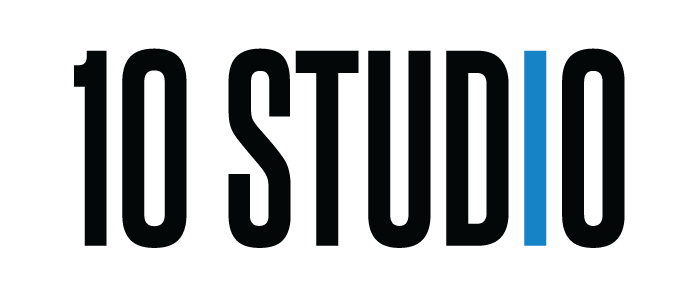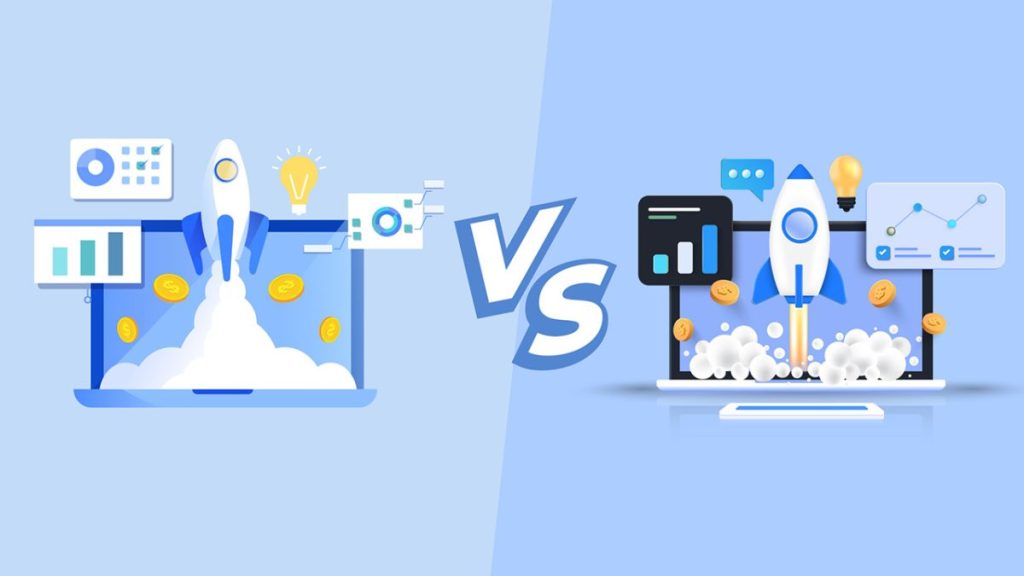Animation is a fascinating and versatile art form that can create stunning visuals, captivating stories, and memorable characters. But animation is not a one-size-fits-all medium.
There are different types of animations, each with its own advantages, disadvantages, and applications.
In this article, we will explore the differences between two of the most popular and widely used forms of animation: 2D vs 3D animation. We will also look at the skills, tools, and career opportunities for each type of animation.
It’ll help you decide what style of animation suits your vision best. So, let’s get right into it!
What is 2D Animation?
2D animation is the art of creating movement in a two-dimensional space. This means that the characters, props, and backgrounds are drawn or created flat (two-dimensional) which means they can only be viewed from one side and must be redrawn to show them from another angle.
The illusion of movement is created when individual drawings are sequenced together in quick succession. One second of time is usually divided into 24 frames, and there can be as many as 24 unique drawings in one second of animation (24fps), or as little as two.
2D animation is more artistic than 3D animation, as it requires a large amount of illustration, either on a digital tablet or hand-drawn. 2D animators need to have a good sense of timing, spacing, posing, expression, and movement. They also need to be skilled in drawing, coloring, shading, and lighting.
2D animation can be done by hand or digitally. Some of the most popular tools for 2D animation are Adobe After Effects, Adobe Animate, Toon Boom Harmony, Moho Pro (Anime Studio), Synfig Studio, OpenToonz, Pencil2D Animation, Krita Animation Edition.
What is 3D Animation?
3D animation is a modern form of animation that uses computer-generated models to create realistic and detailed images. Unlike 2D animation, 3D animation has depth and perspective in addition to height and width (three-dimensional), which means that the models can be viewed from any angle.
The illusion of movement is created by manipulating the objects in a virtual 3D space. The objects are modeled using polygons or curves and then rigged with a skeleton that can be controlled by keyframes or motion capture. The objects are also textured, shaded, lit, and rendered to create realistic or stylized images.
3D animation is more technical than 2D animation, as it requires a good understanding of 3D geometry, physics, mathematics, and computer graphics. It is done by using software like Cinema 4D, Maya, or Blender. Some of the most famous examples of 3D animation are Pixar films like Toy Story, Finding Nemo, and Coco.
What is the Difference Between 2D and 3D Animation?
There is one main difference between 2D and 3D animation.
2D is more artistic and 3D is more technical. 2D requires a large amount of illustration, as every frame needs to be drawn, either on a digital tablet or hand-drawn. While 3D animation is tasked with creating movement via ‘rigs’, where a 3D model is essentially given a skeleton that can be manipulated in a virtual 3D space.
Another difference is that 2D animation is based on frames whereas 3D animation is based on movements. In 2D animation, each frame is a unique drawing that needs to be consistent with the previous and next frames. In 3D animation, each frame is generated by the computer based on the key poses and transitions that the animator sets for the model.
Here are some other differences between 2D and 3D animation:
| Aspect | 2D Animation | 3D Animation |
| Style | More expressive and stylized | More realistic and detailed |
| Perspective | Fixed or limited | Dynamic and flexible |
| Lighting | Simulated or implied | Calculated or simulated |
| Editing | Difficult and time-consuming | Easy and fast |
| Cost | Lower | Higher |
Now that we have defined what 2D and 3D animation is and got a basic idea of the technical differences, let’s compare them in other different aspects and see how they differ from each other.
Origins
The birth of 2D animation as a concept dates back to the 19th century when the first flipbook was produced. The images drawn in the book are gradually changed on each page, and when flipped quickly, they create the illusion of movement.
The first animated film using hand-drawn images was Fantasmagorie (1908) by Émile Cohl. The first animated feature film using hand-drawn images was El Apóstol (1917) by Quirino Cristiani. Snow White and the Seven Dwarfs (1937) was the first animated feature film using hand-drawn images in color and with sound.
As for 3D technology, British photographer William Friese-Greene came up with the idea in 1890. However, the historical origin is more commonly traced to 1922, when the film The Power of Love, which is considered the first 3D reel, was first screened.
The first computer-generated 3D animation was Hummingbird (1967) by Charles Csuri and James Shaffer. The first computer-generated 3D feature film was Toy Story (1995) by Pixar.
Techniques
The main techniques used in 2D animation are:
- Traditional animation: This is the oldest and most labor-intensive technique, where each frame is drawn by hand on paper or cel. This technique is rarely used today due to its high cost and time consumption.
- Digital animation: This is the most common technique today, where each frame is drawn or painted on a digital tablet or computer using software. It allows for more flexibility and efficiency than traditional animation.
- Cut-out animation: This is a technique where characters and objects are made of paper or other materials and moved frame by frame on a flat surface. This technique can create a distinctive style and save time and resources.
- Rotoscoping: This is a technique where live-action footage is traced over to create realistic or stylized animation. It can enhance the realism and fluidity of movement, but can also result in a lack of expression and originality.
The main techniques used in 3D animation are:
- Keyframe animation: This is the most common technique, where the animator sets the position and orientation of the objects at certain points in time (keyframes), and the software interpolates the movement between them. It gives the animator full control over the motion and timing of the objects.
- Motion capture: This is a technique where the movement of a real actor or object is recorded using sensors or cameras and then transferred to a 3D model. This technique can create very realistic and natural animation, but can also limit the creativity and stylization of the animator.
- Procedural animation: This is a technique where the movement of the objects is generated by algorithms or rules, rather than by keyframes or motion capture. This technique can create complex and dynamic animation, such as crowds, fluids, fire, hair, etc., but can also be difficult to control and predict.
- Simulation: This is a technique where the movement of the objects is determined by physical laws, such as gravity, collision, friction, etc., rather than by keyframes or motion capture. It can create realistic and believable animation, but can also be computationally expensive and unstable.
Formats and Narratives
Both 2D and 3D animation can be used for various formats and narratives, such as films, TV shows, video games, web series, commercials, educational videos, etc.
However, some formats and narratives may be more suitable for one style than the other, depending on the artistic vision, the target audience, the budget, and the technical feasibility.
For example, 2D animation is often preferred for:
- Comedy: 2D animation can create exaggerated and expressive characters and situations that can enhance the humor and appeal of comedy. Examples: The Simpsons, Family Guy, Rick and Morty, SpongeBob SquarePants, etc.
- Fantasy: 2D animation can create imaginative and magical worlds and creatures that can captivate the viewers and transport them to another reality. Examples: Spirited Away, Howl’s Moving Castle, Avatar: The Last Airbender, Adventure Time, etc.
- Musical: 2D animation can create musical sequences that can synchronize the movement and the sound in a harmonious and artistic way. Examples: The Lion King, Beauty and the Beast, Frozen, Aladdin, etc.
On the other hand, 3D animation is often preferred for:
- Action: 3D animation can create dynamic and realistic action scenes that can thrill the viewers and immerse them in the excitement. Examples: The Incredibles, Spider-Man: Into the Spider-Verse, Kung Fu Panda, How to Train Your Dragon, etc.
- Sci-fi: 3D animation can create futuristic and technological settings and effects that can fascinate the viewers and showcase the innovation and creativity of the genre. Examples: WALL-E, The Matrix, Avatar, Star Wars, etc.
- Horror: 3D animation can create terrifying and gruesome visuals that can scare the viewers and evoke a strong emotional response. Examples: Resident Evil, Silent Hill, The Walking Dead, Coraline, etc.
Of course, these are not strict rules or limitations. There are many examples of successful projects that use 2D or 3D animation for different formats and narratives than those mentioned above. For instance:
- Klaus (2019) is a 2D animated film that uses a unique lighting technique to create a stunning visual style that enhances the story of a postman who befriends a reclusive toymaker in a frozen town.
- Coco (2017) is a 3D animated film that uses vibrant colors and detailed textures to create a beautiful representation of Mexican culture and the Day of the Dead celebration.
- Cuphead (2017) is a 2D animated video game that uses a retro style inspired by the cartoons of the 1930s to create a challenging and charming platformer.
Do you want to learn how cartoons and animations differ and which one can boost your advertising campaigns? Read our article on this topic.
- Minecraft (2011) is a 3D animated video game that uses a pixelated style to create a sandbox game where players can build and explore infinite worlds.
The choice of format and narrative depends largely on the creative vision of the animator or director. There is no right or wrong answer. The important thing is to choose the style that best serves the story and engages the audience.
Costs
One of the most practical factors to consider when choosing between 2D and 3D animation is the cost.
The cost of animation depends on many variables, such as quality, length, complexity, style, team size, deadline, etc. Therefore, it is hard to give a definitive answer to which style is more expensive.
However, some general factors that can affect the cost of animation are:
Software
2D animation software is usually cheaper than 3D animation software. For example, Adobe Animate costs $20.99 per month, while Autodesk Maya costs $235 per month. You can buy Maya with Flex tokens, which are a new way to pay for software access as you need it.
However, there are also free or open-source software options for both styles, such as Blender for 3D animation and OpenToonz for 2D animation.
Hardware
3D animation requires more powerful and expensive hardware than 2D animation.
For example, a 3D animator may need a high-end computer with a fast processor, a large memory, a good graphics card, and a large monitor. A 2D animator may only need a mid-range computer with a decent tablet and pen.
Time
2D animation usually takes more time than 3D animation.
This is because 2D animation requires more drawing and redrawing of each frame, while 3D animation can reuse and manipulate the same models and rigs.
However, this also depends on the level of detail and quality of the animation.
Skills
Both 2D and 3D animation require skilled and experienced animators who can charge high rates for their work.
3D animation may require more specialized skills and knowledge than 2D animation, such as modeling, rigging, texturing, lighting, rendering, etc. Therefore, finding and hiring qualified 3D animators is more difficult and costly than finding and hiring qualified 2D animators.
Based on these factors, we can estimate that 3D animation is generally more expensive than 2D animation. However, this is not always the case.
There are many examples of low-budget 3D animation projects and high-budget 2D animation projects. For instance:
- Sintel (2010) is a short 3D animated film that was made with a budget of €400,000 using Blender, a free and open-source software.
- The Prince of Egypt (1998) is a feature-length 2D animated film that was made with a budget of $70 million using traditional hand-drawn animation.
The cost of animation ultimately depends on the specific needs and goals of each project. The best way to determine the cost of animation is to consult with professional animators or studios like 10.Studio who can provide accurate quotes and estimates based on the scope and requirements of the project.
Career Opportunities
Animation is a booming and diverse industry that offers many career opportunities for both 2D and 3D animators. However, the demand and availability of jobs may vary depending on the market, trends, and skills.
According to the U.S. Bureau of Labor Statistics, the median annual wage for multimedia artists and animators was $78,790 in May 2021. Also, the employment of multimedia artists and animators is projected to grow by 5% from 2021 to 2031.
In general, 3D animation has more career opportunities than 2D animation, especially in the fields of film, TV, video games, and advertising. Because 3D animation is more popular and widely used in these mediums, and requires more specialized and technical skills.
However, this does not mean that 2D animation is obsolete or irrelevant. There are still many niches and genres that prefer 2D animation, such as web animation, educational animation, advertising animation, etc.
Moreover, 2D animation skills are still valuable and transferable to other fields, such as graphic design, illustration, comics, etc. You can check out this article on the future of the 2D animation industry.
Here are some of the common career paths for each type of animation:
Careers in 2D Animation
- 2D Animator
- Storyboard Artist
- Character Designer
- Background Artist
- Layout Artist
- Concept Artist
- Illustrator
- Graphic Designer
- Motion Graphics Designer
- UI/UX Designer
Careers in 3D Animation
- 3D Animator
- 3D Modeler
- Rigging Artist
- Lighting Artist
- Texture Artist
- Rendering Artist
- Visual Effects Artist
- Game Developer
- Simulation Engineer
- VR/AR Developer
Which Type of Animation Should You Choose?
There is no definitive answer to which type of animation is better or more suitable for your project. It depends on your personal preference, artistic vision, target audience, budget, timeline, and goals.
However, here are some general guidelines that might help you decide:
- Choose 2D animation if you want to create a more artistic and stylized project that focuses on emotion, expression, humor, or nostalgia.
- Choose 3D animation if you want to create a more realistic and detailed project that focuses on action, adventure, spectacle, or immersion.
Of course, you can also combine both types of animation to create a hybrid or mixed-media project that takes advantage of the best of both worlds.
For example, you can use 3D animation for the backgrounds and environments, and 2D animation for the characters and effects. Or you can use 2D animation for the main story, and 3D animation for the opening and closing sequences.
How to Get an Animated Explainer Video from 10.Studio
You have a brilliant idea that deserves to be shared with the world. But how can you explain it in a way that is clear, engaging, and persuasive? The answer is simple: you need an animated explainer video from 10.Studio!
10.Studio is the ultimate online platform that matches you with skilled and creative animators who can craft amazing animated explainer videos for any purpose. No matter what industry you are in, 10.Studio can help you reach your audience and achieve your objectives.
Don’t hesitate to start your animation project today and get a free quote from 10.Studio! Just fill out the form below and we will contact you as soon as possible. Let’s turn your idea into a reality with the magic of animation!
Wrapping Up
Animation is a rewarding and exciting career that allows you to express your creativity and imagination.
Whether you choose a 3D or 2D animation studio or both, you will be able to create amazing stories and characters that can inspire and entertain your audience. The only limit is your own imagination!
Happy animating! 🎨
FAQ
Here are some frequently asked questions and answers about 2D and 3D animation.
Q: Is 3D Animation Easier Than 2D?
A: In terms of production, 2D animation is longer and harder than 3D animation. However, 3D animation projects take a lot of time to prepare before actually starting animating. Ultimately, it depends on the level of detail, complexity, and skill of the animator. 3D animators also need a lot more technical skills than 2D animators.
Q: Is VFX 2D or 3D?
A: VFX projects utilize a combination of both 2D and 3D techniques to achieve the desired visual effects. 2D VFX refers to visual effects created using 2D techniques, such as compositing, matte painting, and rotoscoping. 3D VFX involves the use of computer-generated 3D models, animation, and rendering techniques to create visual effects.
Q: Should I Learn 2D or 3D First?
A: 2D animation might be a good starting point, as it introduces the core concepts of movement and placement in a simpler way than 3D animation. That’s how some animators learned and they found 3D animation more manageable afterwards.




